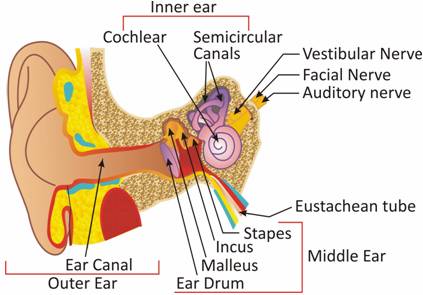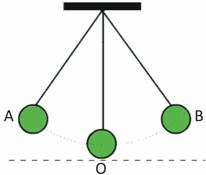Sound Worksheet-7
-
Do you see the vibrations in all the cases?
-
Explain the principle on which Jal Tarang works.
-
Name the organ in human that produces sound. How does it work?
-
What do you mean by vacuum? What happens to the loudness of sound in vacuum?
-
How do human hear the sounds?
-
What do you mean by oscillatory motion?
-
What is frequency? How does it affect the quality of sound?
-
What are the two important properties of a sound?
-
What do you mean by noise and musical sound?
Answer:
-
The vibrating objects produce sound. In some cases the vibrations are easily visible to us. But in most of the cases, the vibrations are not visible due to very small amplitude. But the vibrations in all the cases can be felt.
-
Jal Tarang works on the principle that the quality of sound is changed as its frequency changes. Metal tumbler filled with water up to different heights, give vibrations of different frequencies, so they produce different types of sounds.

-
In humans, the sound is produced by the voice box or larynx. The voice box has two vocal cords stretched across it, in such a way that it leaves a slit or the passage for air. When the lungs force air through slit, the vocal cords vibrate to produce sound.
-
When the amount of air decreases the sound decreases. When air is removed completely from a vessel, it is said that there is a vacuum. If all the air is sucked from the vessel then sound would stop completely. The sound cannot travel through a vacuum.
-
The hearing organs in human are ears.
Ears have a stretched structure called ear drum.
When ears receive sound, it enters the ear canal and reach ear drum.
Vibrations of sound vibrate the ear drum
Ear drum sends vibrations to inner ear from which vibrations are sent to brain for interpretation of sound.

-
The to and fro motion of the object is called vibration. This motion is the movement in both directions from its mean position. This motion is either side of the object from its mean position is called the oscillatory motion.

-
The number of oscillation per second is called frequency.
Its unit is hertz.
A frequency of 1 Hz is one oscillation per second.
The frequency determines the shrillness of sound.
It is also called pitch of sound.
The high frequency makes the high pitch and the pitch is low if the frequency is less.
-
(i) Amplitude: It is the maximum distance in one side from the mean position of an oscillatory motion. It controls the loudness of sound, more the amplitude more loud the sound.
(ii) Frequency: Number of oscillations in one second is called frequency. It controls the pitch of the sounds. High pitched sound means high frequency.
-
Noise: The unpleasant sounds are called noise. It is unwanted sound. It is harmful to our ears.
Musical sound: The sound which produces pleasant sensations is called musical sound. It is produced by various musical instruments.


